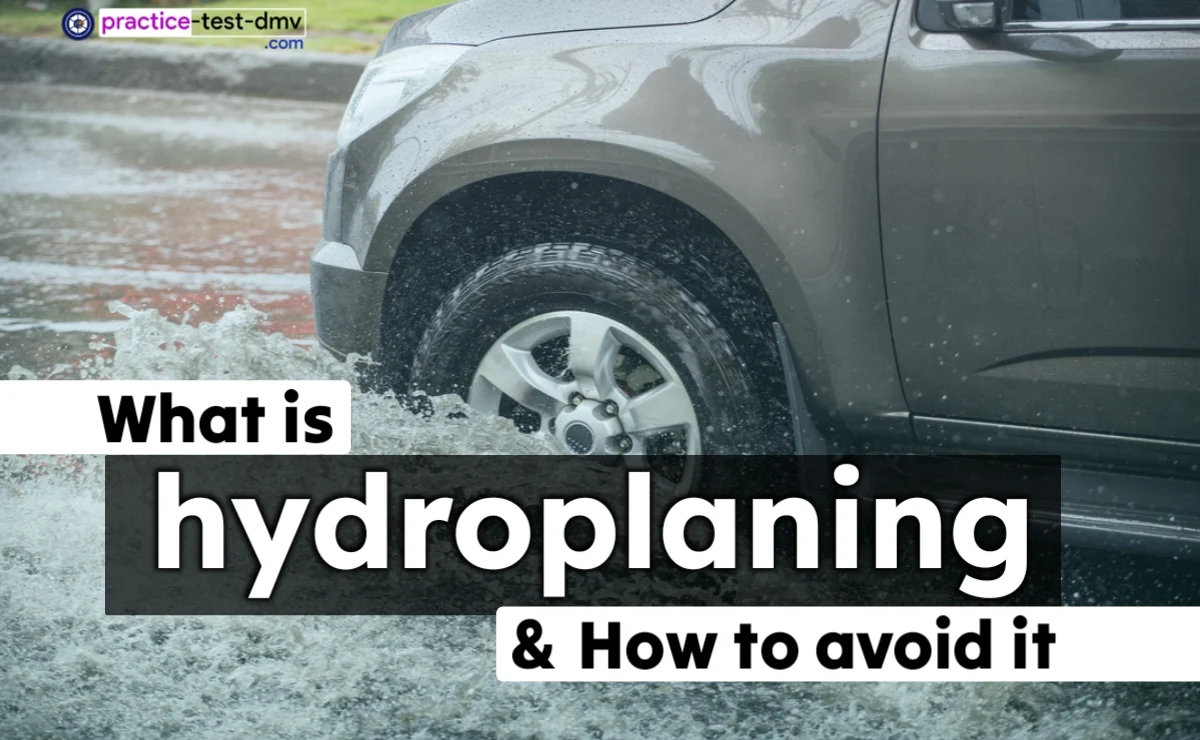Driving in the rain can be a nerve-wracking experience, especially when you consider the dangers of hydroplaning. This phenomenon occurs when a layer of water builds up between your tires and the road surface, causing your vehicle to glide on top of the water and lose traction. Imagine driving on ice – that's essentially what hydroplaning feels like.
Hydroplaning: What It Is and How to Avoid It
Hydroplaning is a dangerous phenomenon that can occur when driving in wet or rainy conditions. It happens when a vehicle's tires lose contact with the road surface due to a layer of water. This can cause the vehicle to glide on top of the water, making it difficult to control.
What is Hydroplaning?
Hydroplaning, also known as aquaplaning, is a loss of traction between a vehicle's tires and the road surface caused by a layer of water. When driving through water, your tires can't displace the water fast enough, resulting in your vehicle gliding on top of it. This loss of contact with the road makes it impossible to control your steering, braking, and acceleration.
What Does "Hydroplane" Mean?
The verb "hydroplane" means to skim or glide on the surface of water. When applied to vehicles, it describes the loss of traction caused by water on the road.
Hydroplaning Occurs When Your Tires
Several factors can contribute to hydroplaning, including:
- Speed: The faster you're driving, the more likely you are to hydroplane. A good rule of thumb is to reduce your speed significantly below the posted limit when driving in wet weather.
- Tire depth: Worn-down tires have less tread to grip the road, making them more susceptible to hydroplaning. Ensure your tires have at least 2/32" of tread depth.
- Water depth: Deeper water is more likely to cause hydroplaning. Be extra cautious when driving through large puddles or flooded areas.
- Uneven road surfaces: Puddles and potholes can increase the risk of hydroplaning. Avoid driving through them if possible.
Car Hydroplane: When Skids Are Most Likely
Hydroplaning can cause your car to skid in several ways:
- Straight-line skid: This occurs when you lose traction with the road while driving straight.
- Spin-out: If you make a sudden steering wheel movement while hydroplaning, your car can spin out of control.
- Loss of control skid: This can happen if you hit a patch of water while cornering, causing your car to lose traction and skid off the road.
Hydroplane Accident: The Dangers are Real
Hydroplaning accidents can be serious and even deadly. They can lead to:
Loss of control and collisions with other vehicles or objects.
Rollover accidents.
Injuries or fatalities to the driver and passengers.
Hydroplaning Speed: Slow Down to Stay Safe
The risk of hydroplaning increases significantly as your speed increases. Here are some general guidelines:
At highway speeds (55 mph or higher), even shallow puddles can cause hydroplaning.
At city speeds (35-45 mph), you're more likely to hydroplane on deeper water or uneven road surfaces.
When driving in heavy rain, it's best to reduce your speed by 10-20 mph below the posted limit.
Types of Hydroplaning (Beyond Aviation)
While most people associate hydroplaning with vehicles, it can also occur in other situations:
- Boat hydroplaning: High-performance boats can lift their hulls out of the water and travel on the surface at high speeds.
- Ski hydroplaning: Water skiers can use the same principle to glide across the water's surface.
3 Types of Hydroplaning (for Vehicles)
There are three main types of hydroplaning that can occur with vehicles:
- Full hydroplaning: This is the most dangerous type, where all four tires lose contact with the road.
- Partial hydroplaning: This occurs when only one or two tires lose contact with the road.
- Viscous hydroplaning: This happens at slower speeds when a thin film of water remains between the tires and the road, reducing traction.
How to Avoid Hydroplaning
The best way to avoid hydroplaning is to drive slowly and cautiously in wet or rainy conditions. Here are some additional tips:
- Maintain a safe speed: Reduce your speed significantly below the posted limit when driving in wet weather.
- Be aware of your surroundings: Watch for puddles, standing water, and uneven road surfaces.
- Steer around standing water, if possible: If you can't avoid driving through water, do so slowly and carefully.
- Slow down when changing lanes or direction: Sudden changes in direction can cause you to hydroplane.
- Use your wipers: Good visibility is essential for safe driving in wet weather.
- Keep your tires properly inflated: Properly inflated tires have better traction and are less likely to hydroplane.
- Replace worn-down tires: Tires with less than 2/32" of tread depth should be replaced.
What to Do If You Start to Hydroplane
If you feel your vehicle starting to hydroplane, stay calm and do not panic. Here are the steps you should take:
- Ease off the gas pedal: Do not apply the brakes, as this can cause you to lose control.
- Hold the steering wheel steady: Do not make any sudden turns.
- Let the vehicle slow down gradually: The hydroplaning will stop as your speed decreases.
- Once you regain traction, you can begin to apply the brakes gently.
- Slow down: This is the most important tip. Reduce your speed significantly below the posted limit when driving in wet weather.
- Be aware of your surroundings: Watch for puddles, standing water, and uneven road surfaces. Avoid driving through them if possible.
- Steer around standing water:
By following these tips, you can help to avoid hydroplaning and stay safe on the road in wet or rainy conditions.



